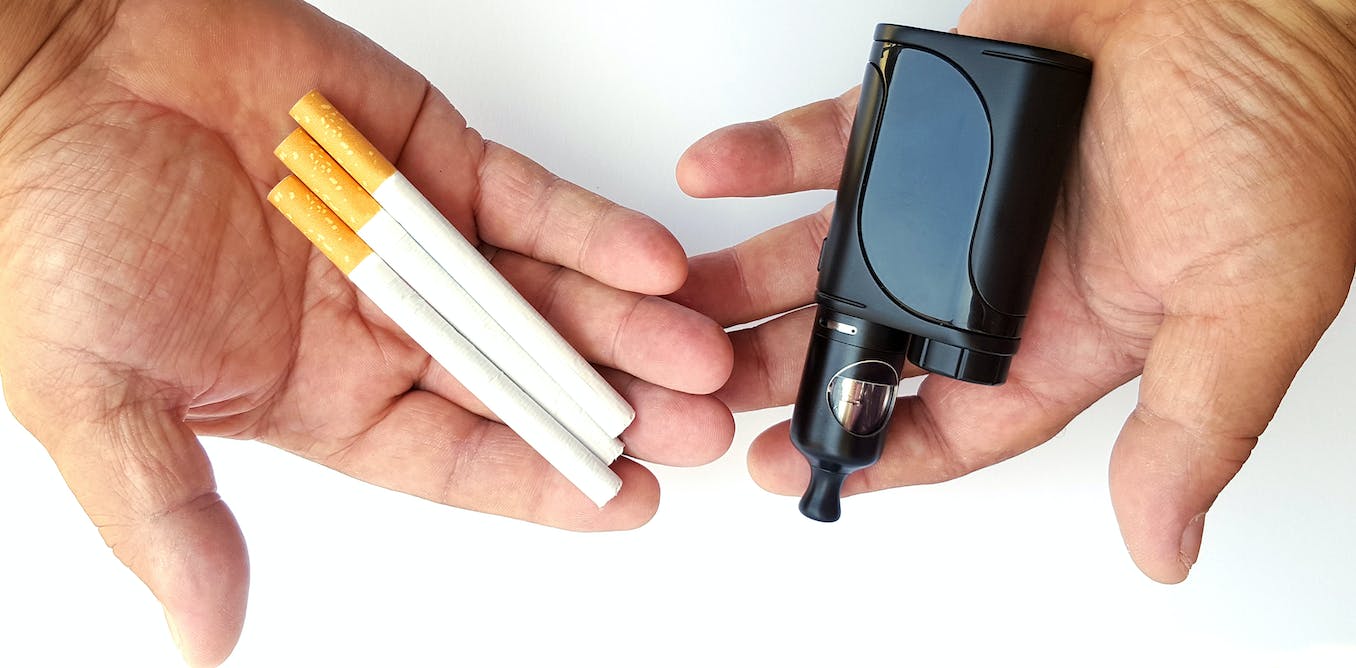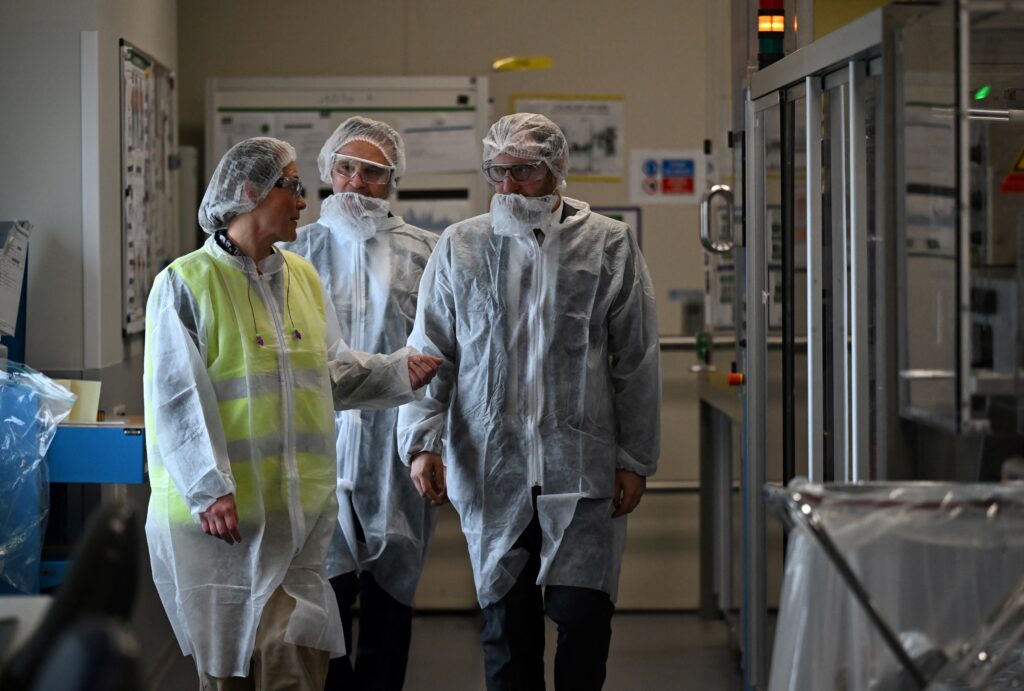The UK government set out ambitious plans in 2019 to make England smoke free by 2030. To achieve this, they recently announced plans to offer free vape starter kits to one million smokers in a bid to help them quit.
While smoking cigarettes is associated with a range of serious health problems, mounting evidence shows that vaping is also not without harms and risks. Given that there is still a lot we do not know about the health effects of vaping, we argue it is potentially irresponsible to recommend smokers switch to vaping to quit – especially when other medically proven methods to quit smoking already exist.
E-cigarettes and vapes have only been around since the early 2000s. As such, there is still a lot we do not know about the harms that may be associated with their long-term use. But a growing body of evidence indicates vaping is not as harmless as many believe.
For example, studies have shown that vaping can induce bronchiolitis, an infection which closes off the smaller airways in the lungs, making breathing more difficult. This can become irreversible with prolonged vaping, given how fragile our lungs are.
Research also shows vaping can cause similar cellular changes in the lungs as smoking does. One study showed that people who vaped (including those who vaped nicotine) had similarly elevated levels of protease enzymes – harmful enzymes that may damage lung function – as smokers. Vaping may also increase mucus production in lung cells, worsening asthma and causing airways to become more sensitive and constrict more easily.
Long-term use of vaping products can affect the way blood vessels function as well, increasing the risk of cardiovascular disease. In one report people who used nicotine e-cigarettes had increased blood pressure, heart rate and blood vessel constriction immediately after vaping nicotine. These effects were similar to those seen in people who smoke cigarettes, but are occurring at a much younger age.
Much of this harm is probably caused by the contents of the vaping liquids used. In addition to nicotine, vape liquids also contain a cocktail of flavour chemicals and additives used in food products.
Most of these chemicals have not undergone testing to check if they are safe to be heated to high temperatures and inhaled into the lungs. To add to the already complex scenario, they can break down when heated in vaping devices, causing them to turn into more reactive chemicals. These reactive chemicals can cause damage to cells and tissues in the lung.

ilkov_igor/ Shutterstock
In fact, in 2019 the death of 68 people was found to be caused by the thermal breakdown of a specific chemical (vitamin E acetate) that was being added to some vaping liquids. The condition was even given a name: Evali (e-cigarette or vaping use-associated lung injury). Although this additive is now banned in both the US and UK, it is an example of the damage that can happen when vape-heated chemicals are inhaled into the lungs.
While there are regulations on the kinds of ingredients vaping liquids can contain, research into how vaping causes them to convert into other chemicals is only beginning. As such, the health risks from these vape-generated chemicals could lead to similar health problems as vitamin E acetate did – though it’s likely to take years of accumulative damage before such problems emerge.
Alongside these health risks is the fact that vaping is not a guaranteed way to help smokers quit. In fact, vaping to quit may only lead to dual use – which is riskier than using either product alone. One review also found that smokers who switched to e-cigarettes may relapse and use cigarettes later on.
Alternative solutions
The Food and Drug Administration in the US, alongside other agencies in Europe, do not recommend vaping as a replacement for smoking. Most cite the lack of evidence supporting the use of vaping to help people quit smoking, alongside the lack of safety testing as reasons they do not recommend it.
It’s mystifying that there has been such little concern expressed about the UK’s proposal to encourage smokers to take up vaping since it was first put forward by an independent review for the government in 2022.
Instead of recommending people switch from one risky habit to another, the government should instead recommend the use of medically proven nicotine replacement therapies (such as skin patches, gums and nasal or oral sprays) and personalised counselling to help smokers quit. The government also needs to put more onus on vaping companies to prove their products are safe before they can be sold to the public, following similar protocols that drug companies need to follow.
Remember that it took much longer than it should have for the serious harm caused by tobacco to be proven and accepted. The evidence that vaping can be harmful is mounting, and we cannot afford to take as long as it took with cigarettes to warn people about the potential risks it poses. Instead of encouraging people to vape in order to quit smoking, they should instead be encouraged to ask their GP or pharmacist for access to proven and safe nicotine replacement therapies.




